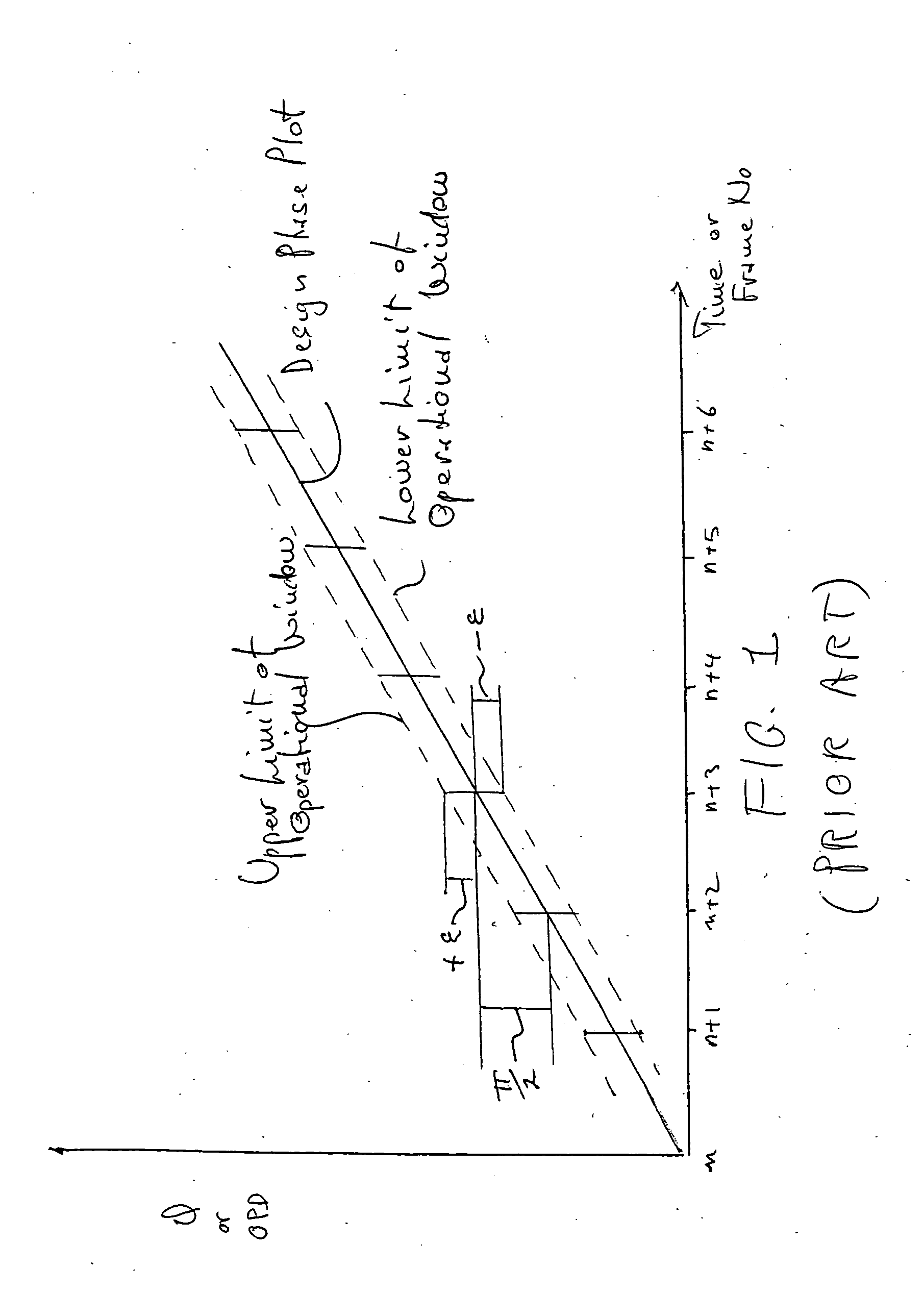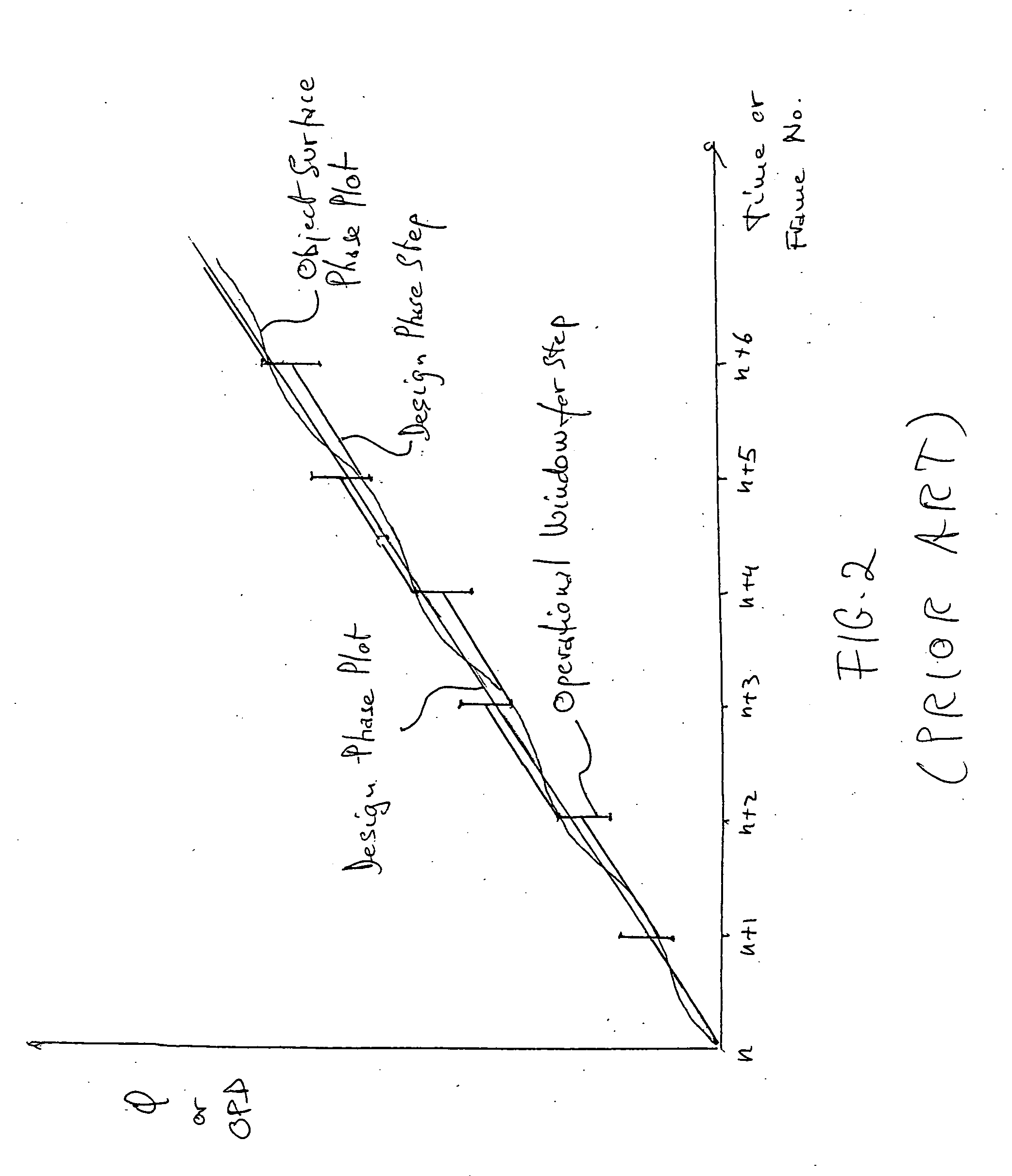Measurement of object deformation with optical profiler
a technology of object deformation and profiler, which is applied in the field of scanning interferometry, can solve the problems of inability to recover object-motion information, inability to detect object motion, and inability to accurately detect object motion, etc., and achieve the effect of improving the accuracy of the instrumen
- Summary
- Abstract
- Description
- Claims
- Application Information
AI Technical Summary
Benefits of technology
Problems solved by technology
Method used
Image
Examples
Embodiment Construction
[0038] The inventive concept of this disclosure resides in the idea of appropriately introducing an additional component to the scanning motion in the interferometric profiler to produce phase changes between acquisition frames that ensure the proper utilization of the algorithms selected for interferometric analysis. The invention preferably utilizes narrow-band light sources to cover the entire range of operation of the scanner, as is commonly done in prior-art profilers. As is well understood, if a wider band light is used, the range of operation is restricted to the coherence of the light. Accordingly, the invention is suitable for implementation with most types of conventional interferometric techniques. In addition, the invention preferably also utilizes a narrow-band reference signal to accurately track scanner motion (or other equivalent means to track induced fringe motion).
[0039] The terms “interferogram,”“interferometric” and “interferometric fringes” are used with the s...
PUM
 Login to View More
Login to View More Abstract
Description
Claims
Application Information
 Login to View More
Login to View More - R&D
- Intellectual Property
- Life Sciences
- Materials
- Tech Scout
- Unparalleled Data Quality
- Higher Quality Content
- 60% Fewer Hallucinations
Browse by: Latest US Patents, China's latest patents, Technical Efficacy Thesaurus, Application Domain, Technology Topic, Popular Technical Reports.
© 2025 PatSnap. All rights reserved.Legal|Privacy policy|Modern Slavery Act Transparency Statement|Sitemap|About US| Contact US: help@patsnap.com



